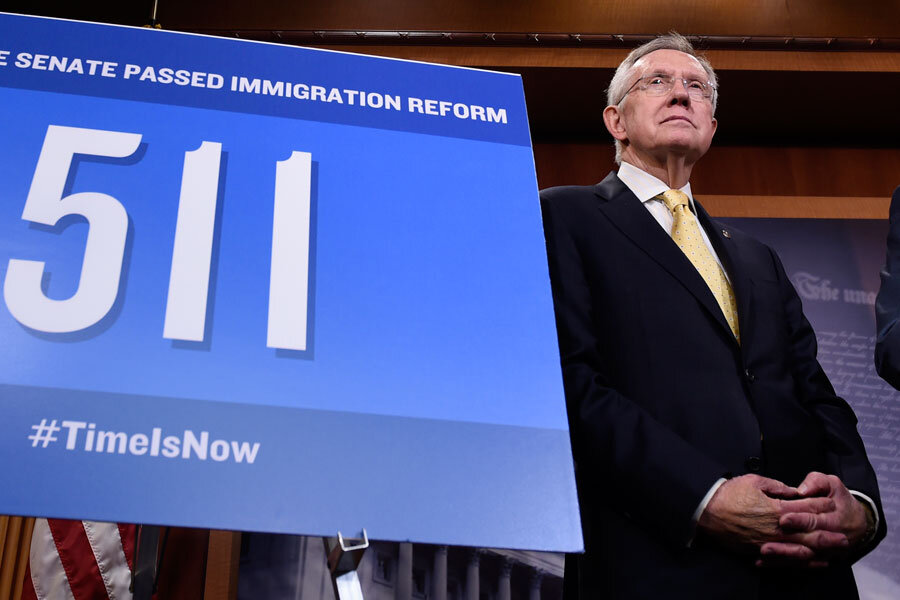Immigration 101: why public is conflicted on Obama move
Loading...
| Washington
Public opinion on President Obama’s soon-to-be-announced move to shield up to 5 million undocumented immigrants from deportation is sharply divided – and internally contradictory.
Almost half of Americans – 48 percent – oppose the president’s plan, while 38 percent support it, according to the latest NBC News/Wall Street Journal poll.
But at the same time, 57 percent of Americans favor a pathway to citizenship for people in the United States illegally – a key sticking point that immigration hard-liners call “amnesty,” the poll finds. And that number increases to 74 percent when those surveyed are told that to get on the “pathway” one must pay fines and back taxes, and pass a security background check.
What the poll shows is that Obama’s biggest problem, beyond the legal argument, is process, NBC News’ “First Read” observes. By a margin of 63 percent to 30 percent, Americans want compromise over sticking to positions on the immigration issue, the poll finds.
“Americans prefer elected leaders coming together to get something done,” says “First Read.”
Obama is likely to pay a political price for giving up on Congress, analysts say. At the same time, if he were to delay executive action further, he would infuriate the immigration activists to whom he has long promised action. At first, he pledged an announcement at the end of the summer, then delayed it until after the Nov. 4 midterms so as not to harm endangered Democrats (many of whom lost anyway).
In fact, perhaps Obama should have made his move before the election to spur Latino turnout in key races, some activists suggest. Overall, Latino turnout this year remained flat at 8 percent of the nation’s voters, same as in the last two midterms (2010 and 2006), while the number of Hispanic eligible voters is more than 25 million today, up from 17.3 million in 2006, according to the Pew Research Center.
Democratic House candidates won 62 percent of the Latino vote this year. That’s similar to the 2010 midterm, but down from 2012, when Latinos voted for Democrats over Republicans for the House by a margin of 68 percent to 30 percent.
In the gubernatorial races in Georgia and Texas, the Republican candidates won more than 40 percent of the Latino vote, Pew notes.
In Nevada, where Obama will deliver a speech Friday promoting his immigration plan, Gov. Brian Sandoval (R) scored notable gains with Latino voters in his reelection bid. He won 47 percent – a threefold increase over his share of the vote in 2010.
“To be sure, Sandoval’s stronger 2014 performance reflects the lack of a serious Democratic challenger, as well as his support for a number of Latino policy priorities including Medicaid expansion, funding for English Language Learners, and support for driver’s privilege cards,” writes David Damore, a senior analyst for Latino Decisions polling firm.
“Perhaps no Democrat though owes his political survival to the Latino community more than Harry Reid,” Mr. Damore adds. “In 2010 it was strong Latino turnout and these voters’ overwhelming support for Reid allowed Reid to escape that year’s Republican wave and continue serving as Senate majority leader.”
Senator Reid is up for reelection in 2016.






